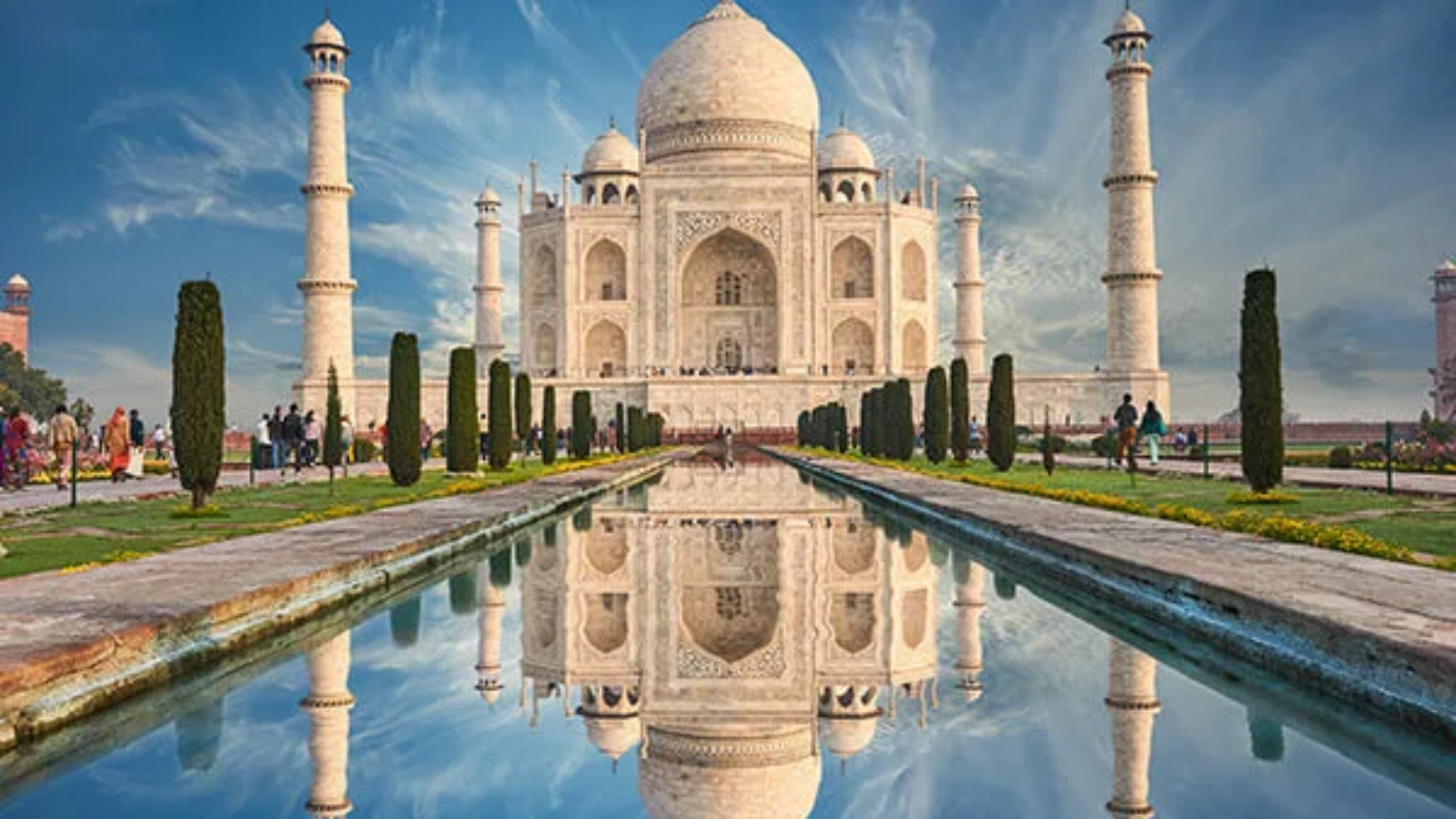The Taj Mahal, an ethereal ivory-white marble mausoleum standing on the banks of the Yamuna River in Agra, India, is a masterpiece that has captured the hearts of millions. This awe-inspiring monument of love, commissioned by the Mughal Emperor Shah Jahan in memory of his beloved wife Mumtaz Mahal, stands as an eternal symbol of devotion and architectural brilliance. Embarking on a journey to discover the Taj Mahal is a voyage through time and a celebration of the everlasting power of love.
A Glimpse of History:
Built between 1632 and 1653, the Taj Mahal stands as the crowning jewel of Mughal architecture. It was designed by Ustad Ahmad Lahori and is a harmonious blend of Persian, Islamic, and Indian architectural styles. The structure, set against a symmetrical garden and flanked by beautiful reflecting pools, reflects a sense of perfection and balance in its design.
The Symbol of Eternal Love:
The Taj Mahal was born out of Emperor Shah Jahan’s love for his beloved wife, Mumtaz Mahal, who tragically passed away during childbirth. Grief-stricken, the emperor envisioned an unparalleled monument to immortalize their love. The Taj Mahal is believed to be the embodiment of Mumtaz Mahal’s beauty and the eternal love shared between the couple.
The Magnificent Architecture:
As visitors approach the Taj Mahal through the grand entrance, the sheer magnificence of the structure leaves them in awe. The central dome, an architectural marvel, appears to float like a lotus on a cloudless sky. Its symmetry and precision leave admirers spellbound. The intricate marble inlays and decorative elements throughout the monument showcase exquisite craftsmanship.
The Changing Hues:
One of the most enchanting aspects of the Taj Mahal is its ever-changing hues, which vary throughout the day. As the sun rises, the monument adorns a soft pink hue, gradually turning milky white under the midday sun. During sunset, it takes on a warm golden glow, and under the moonlight, it shines like a luminescent pearl. These color transitions are said to symbolize the changing emotions of love.
The Taj Mahal Complex:
The Taj Mahal is not just a single structure but a complex that includes the main mausoleum, a mosque, and a jawab (a building mirroring the mosque). The serene gardens with fountains, pathways, and meticulously laid out flowerbeds offer a tranquil setting to reflect on the monument’s grandeur and historical significance.
Preserving an Icon:
Over the centuries, the Taj Mahal has endured various challenges, including environmental pollution and natural wear. To preserve its pristine beauty, conservation efforts have been ongoing. Visitors are now required to follow specific guidelines to protect the monument’s structural integrity.
The Taj Mahal’s timeless beauty and rich history make it a must-visit destination for travelers from around the world. As visitors stand in awe before this symbol of eternal love, they are transported back in time to an era of grandeur and passion. The Taj Mahal stands as a testament to the enduring power of love, an architectural masterpiece that continues to inspire and captivate the hearts of all who behold it. A journey to discover the majesty of the Taj Mahal is a journey through time, where love and devotion have been etched into the very essence of this extraordinary monument.


Add a Comment